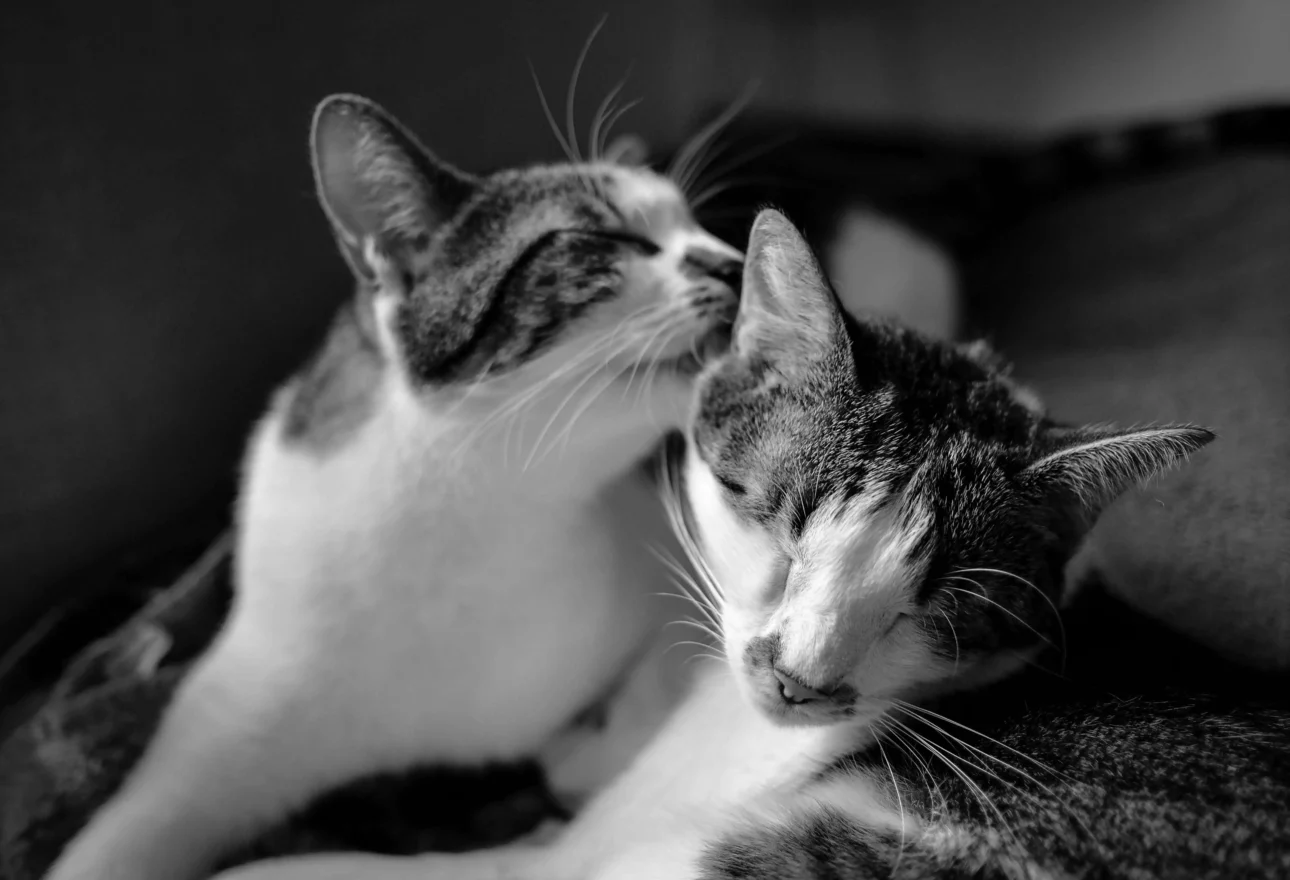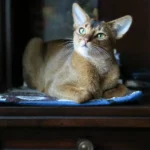If you’ve ever seen two cats meticulously grooming each other, you might have wondered: Why do cats groom each other? It’s a charming sight—one cat carefully licking the other’s head, neck, and back as if they were at the fanciest feline spa. But what’s the purpose behind this behavior? While it may look like a simple act of cleanliness or affection, there’s much more going on here. When cats groom each other, they’re performing a complex social ritual rooted in instinct, bonding, and even hierarchy.
In this article, we’ll explore the reasons behind cats’ mutual grooming behavior, known as “allogrooming.” We’ll dig into the science of cat grooming, touch on the social structures of feline communities, and reveal what this behavior might mean about your cat’s relationship with others in the household. So, if you’re curious about why your cats are so diligent about keeping each other clean, let’s dive in!
Table of Content
- What Is Allogrooming?
- Why Do Cats Groom Each Other?
- Is Grooming Each Other Common Among Cats?
- When Grooming Turns into Aggression
- FAQ
- Conclusion
What Is Allogrooming?
Allogrooming is the term used by animal behaviorists to describe social grooming between members of the same species. Among cats, allogrooming is a multi-functional behavior that goes beyond mere cleanliness. In the wild, allogrooming is most commonly observed in close-knit animal groups, such as lions, which are social felines. Domestic cats have carried this instinctive behavior into their more solitary lifestyles, showing us just how significant grooming is for them.
“Cats groom each other not only for hygiene but as a vital tool for social bonding, sharing scent, and establishing trust.”
Let’s explore the reasons behind this behavior and what your cats might be trying to communicate when they engage in mutual grooming.
Why Do Cats Groom Each Other?
1. Strengthening Social Bonds
One of the most heartwarming reasons behind mutual grooming is the development of social bonds. Grooming between cats often starts when they are kittens, with mother cats grooming their young to clean and comfort them. This early grooming helps young cats learn that touch is safe and that social interaction is comforting. For adult cats, grooming each other becomes a way to maintain a connection and strengthen their bond.
When cats groom each other, they’re essentially saying, “You’re part of my family.” Just like humans use hugs or handshakes to express closeness, cats groom each other to reinforce the trust and affection they share.
2. Reinforcing Hierarchy
In multi-cat households, grooming can sometimes reveal the social hierarchy among your feline companions. Cats are keenly aware of social ranking within their groups. Often, the dominant cat will initiate grooming as a way of asserting its status. This behavior helps establish who the “leader” is in the relationship, and it’s fascinating to see how each cat will respond.
It’s common for the subordinate cat to remain still and allow the dominant cat to groom them. If you notice this pattern in your cats, it’s likely that grooming plays a role in maintaining their social structure, helping each cat feel secure in their role within the group.
3. Spreading Scent and Marking Territory
Cats rely heavily on scent to recognize members of their group, mark their territory, and feel at home. When cats groom each other, they spread their unique scent profile across one another, creating a shared smell that reinforces their group identity. This mutual scent marking is particularly helpful in multi-cat households, as it minimizes conflict by blending each cat’s scent, making them all feel part of a “feline team.”
4. Reducing Stress
Cats are naturally sensitive creatures and are prone to stress, especially when there are changes in their environment or routine. Grooming each other is one way for cats to soothe themselves and reduce tension. This is similar to the way humans might listen to calming music or meditate. If one cat seems anxious, another might step in to groom them, providing comfort and helping to calm them down.
Is Grooming Each Other Common Among Cats?
While mutual grooming is common among cats that share a strong bond, not all cats engage in this behavior. Cats that are raised together from a young age, such as littermates, are more likely to groom each other frequently. However, even cats that have only recently become housemates can develop this behavior as they grow more comfortable with one another.
Some cats are naturally more solitary or independent and may prefer not to engage in grooming behavior. As long as there are no signs of aggression or distress, it’s perfectly normal for some cats to show affection in other ways, such as sleeping close together or rubbing their heads on each other.
When Grooming Turns into Aggression
Though grooming usually signifies positive social interaction, sometimes it can escalate into aggression. For instance, one cat might become overstimulated and react by biting or swatting. If you notice this, try to separate the cats calmly to prevent any further escalation. If aggressive grooming happens frequently, it may be helpful to monitor their interactions closely and provide separate spaces where each cat can relax.
“It’s normal for cats to occasionally have spats during grooming sessions, but ongoing aggression might indicate stress or tension that needs to be addressed.”
FAQ
Q1: Do all cats groom each other?
Not all cats groom each other. Some cats may be more solitary and prefer their own space, while others engage in mutual grooming as part of their social bonding.
Q2: Why does my cat groom me?
Cats often groom their human companions to show affection and to mix scents. It’s their way of including you in their social group!
Q3: How can I tell if my cats are bonded?
Bonded cats often sleep together, groom each other, and follow each other around the house. They may also exhibit “mirroring” behaviors, such as eating or stretching at the same time.
Conclusion
In conclusion, when cats groom each other, it’s about much more than just keeping clean. This instinctive behavior is deeply rooted in social bonding, stress relief, scent sharing, and even social hierarchy. Watching your cats groom each other offers a glimpse into their world of complex relationships and mutual understanding.
So, next time you catch your cats in a grooming session, you’ll know it’s more than a “cat bath”—it’s a reflection of their companionship, trust, and love for one another. Understanding these behaviors can help us appreciate the unique bonds our feline friends share and make our homes a more peaceful place for all.






